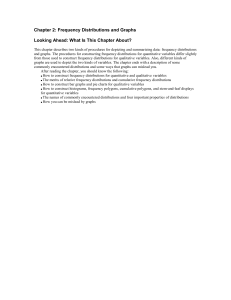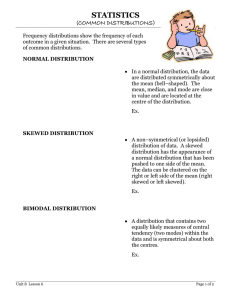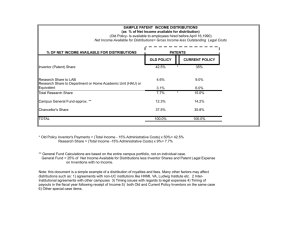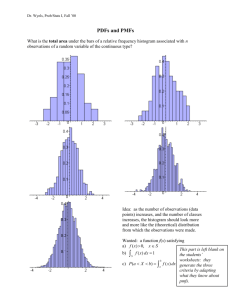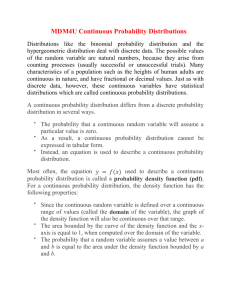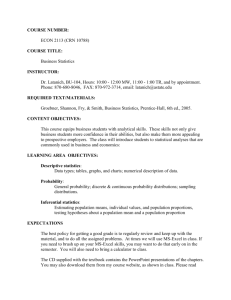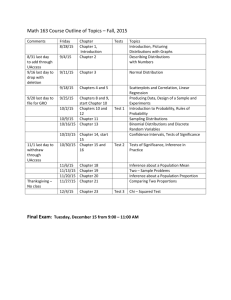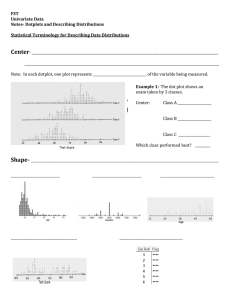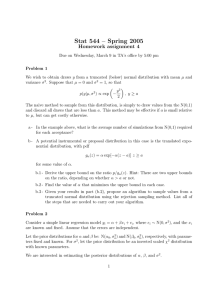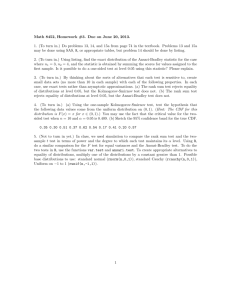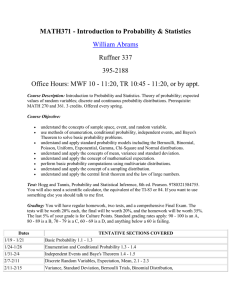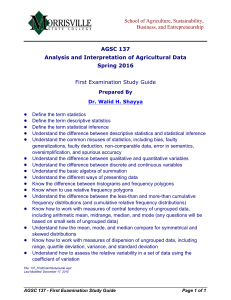Statistics for the Behavioral Sciences, Seventh Edition by Gravetter
advertisement
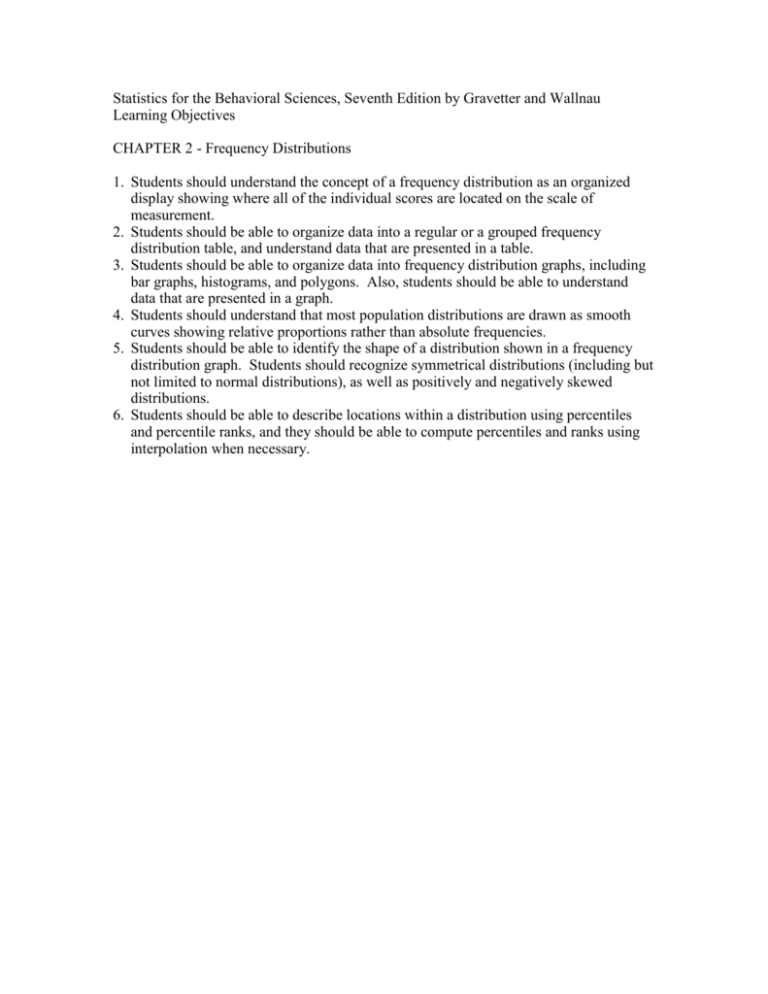
Statistics for the Behavioral Sciences, Seventh Edition by Gravetter and Wallnau Learning Objectives CHAPTER 2 - Frequency Distributions 1. Students should understand the concept of a frequency distribution as an organized display showing where all of the individual scores are located on the scale of measurement. 2. Students should be able to organize data into a regular or a grouped frequency distribution table, and understand data that are presented in a table. 3. Students should be able to organize data into frequency distribution graphs, including bar graphs, histograms, and polygons. Also, students should be able to understand data that are presented in a graph. 4. Students should understand that most population distributions are drawn as smooth curves showing relative proportions rather than absolute frequencies. 5. Students should be able to identify the shape of a distribution shown in a frequency distribution graph. Students should recognize symmetrical distributions (including but not limited to normal distributions), as well as positively and negatively skewed distributions. 6. Students should be able to describe locations within a distribution using percentiles and percentile ranks, and they should be able to compute percentiles and ranks using interpolation when necessary.




